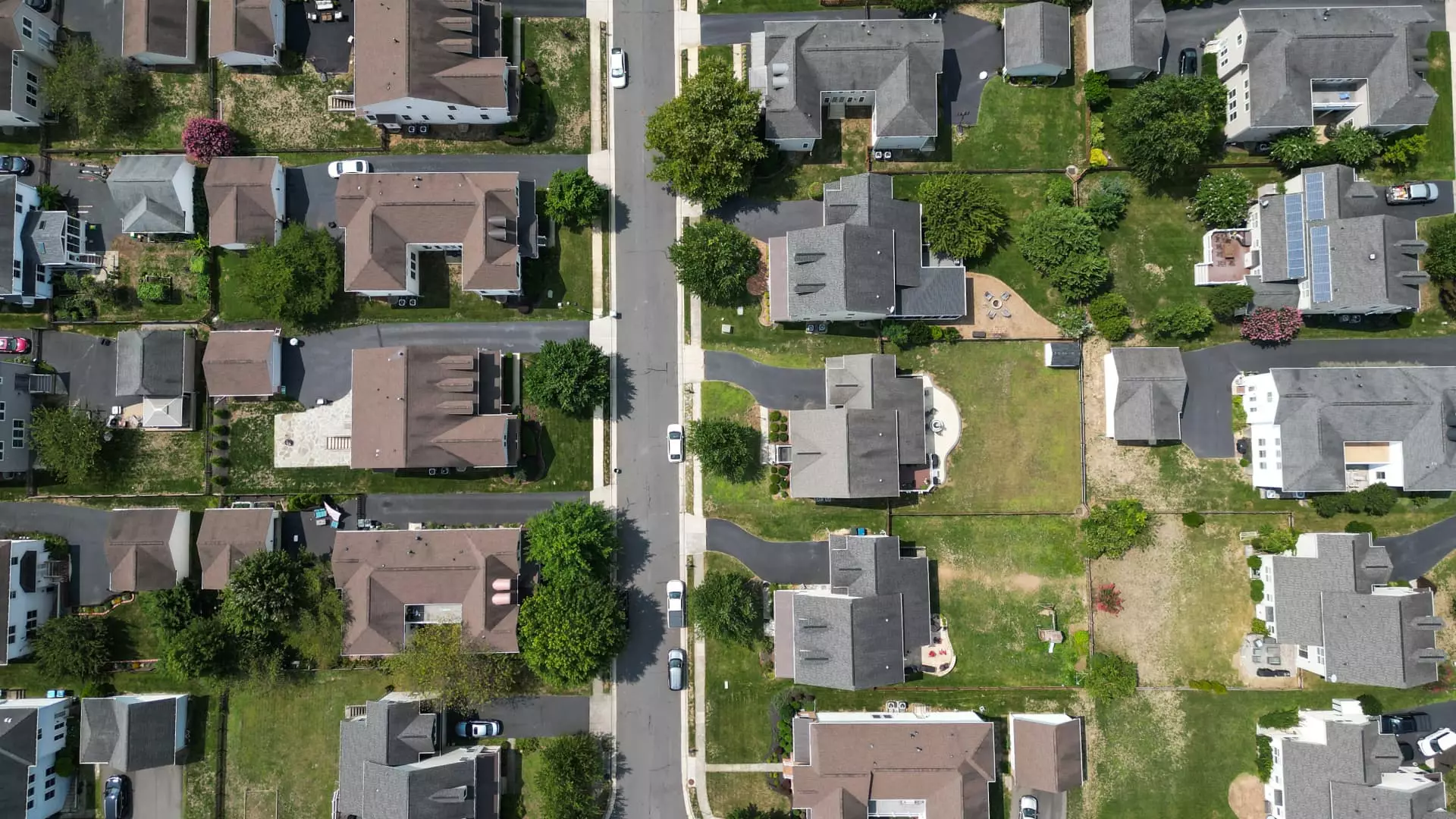Despite the relentless climb of mortgage interest rates to their highest levels in over a month, homebuyers’ enthusiasm remains surprisingly intact. The latest figures suggest a modest uptick of 0.8% in mortgage applications, a number that might seem insignificant in isolation but carries deeper implications for the housing market and economic stability. This lack of a sharp decline hints at a stubborn resilience among prospective homeowners, who perhaps perceive current rates as temporary or believe in the long-term value of property investments. However, this bullish attitude masks a troubling reality: affordability continues to erode as borrowing costs climb.
The Illusion of Market Stability
The data reveals a nuanced picture. While refinance applications dipped nearly 3%, that decline is hardly dramatic, especially considering the 22% surge in application volume compared to last year’s low interest environment. This disparity emphasizes one critical point: the market’s dependency on historical interest rates no longer aligns with the economic fundamentals. Borrowers are still attempting to lock in deals, but this persistence may be masking a fragile optimism that could be shattered once borrowing costs become unequivocally prohibitive. The fact that the median purchase mortgage amount has shrunk from $460,000 to roughly $427,000 underscores a hidden squeeze on middle-market homebuyers, who are increasingly priced out of the market.
The False Promise of Rate Fluctuations
Recent dips in mortgage rates to start the week have sparked cautious optimism among market participants, yet these fluctuations offer little solace to potential homeowners. The broader economic context, marked by rising bond yields due to fears of Federal Reserve shifts, signals a persistent volatility that will likely keep mortgage rates elevated for the foreseeable future. This environment favors investors over aspiring homeowners, reinforcing a cycle where housing affordability continues to decline even as demand remains relatively steady. Such a scenario threatens to deepen social inequality, making homeownership an elusive goal for the working class and younger generations.
The Political and Economic Implications
From a policy perspective, the current mortgage landscape reveals a missed opportunity for government intervention. Instead of addressing the root causes—such as overregulation, inflationary pressures, and misguided monetary policies—we see a muddled focus on short-term rate adjustments. This approach postpones meaningful reforms that could stabilize housing affordability. A persistent rise in mortgage rates can serve as a double-edged sword: while it might cool overheated markets and prevent bubbles, it also risks stifling economic growth and social mobility. For center-right liberals, the priority should be striking a balance that promotes responsible borrowing and strengthens the economic fabric without succumbing to populist pressures or short-term market tinkering.
The Stark Reality for Future Homebuyers
The current trajectory suggests that homeownership will become an even more exclusive privilege rather than a universal aspiration. As borrowing costs climb and median house prices stagnate or fall, many potential buyers will find themselves priced out or forced into renting indefinitely. This shrinking window of opportunity poses profound questions about social equity, economic mobility, and the role of government in safeguarding the middle class. Without decisive action—reforms aimed at stabilizing rates, increasing supply, and supporting responsible lending—the dream of owning a home may slip beyond reach for millions, exacerbating societal divides and undermining economic stability.

